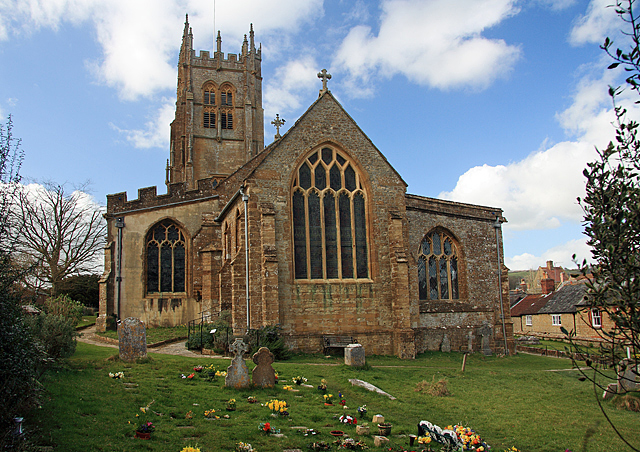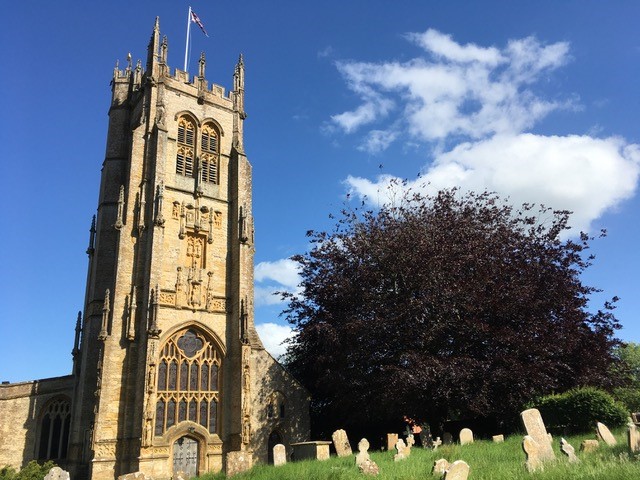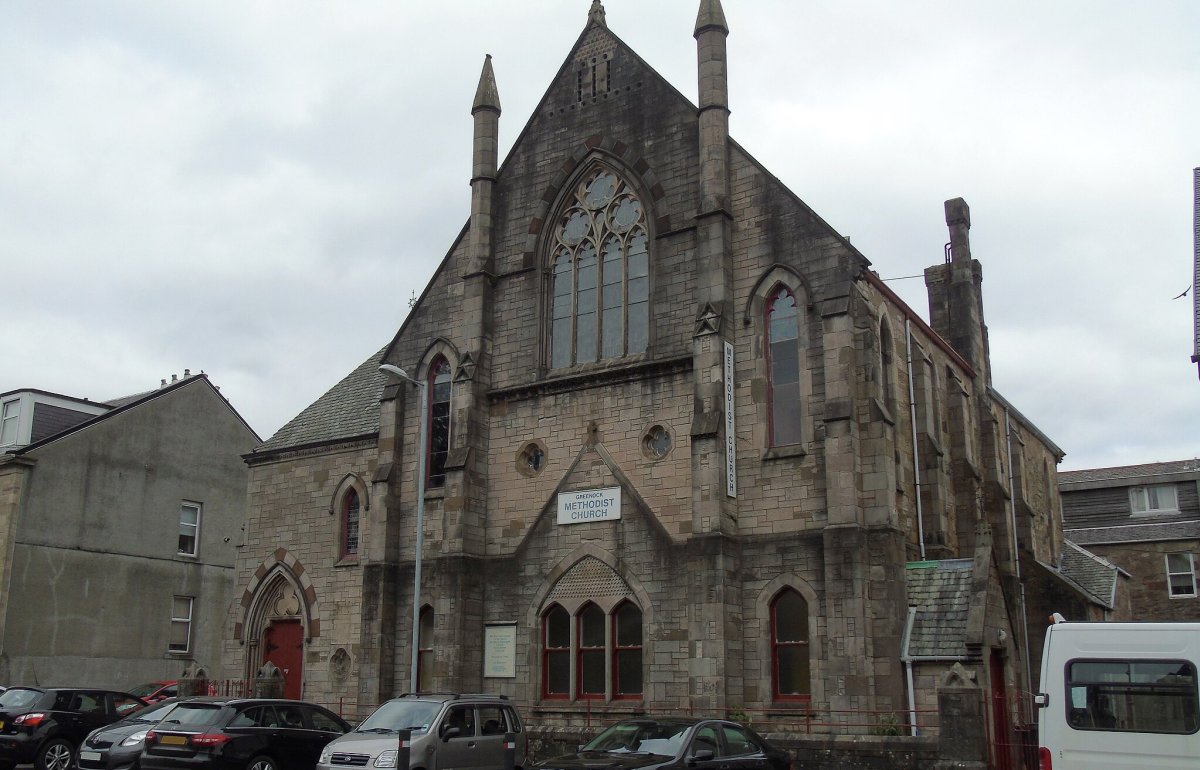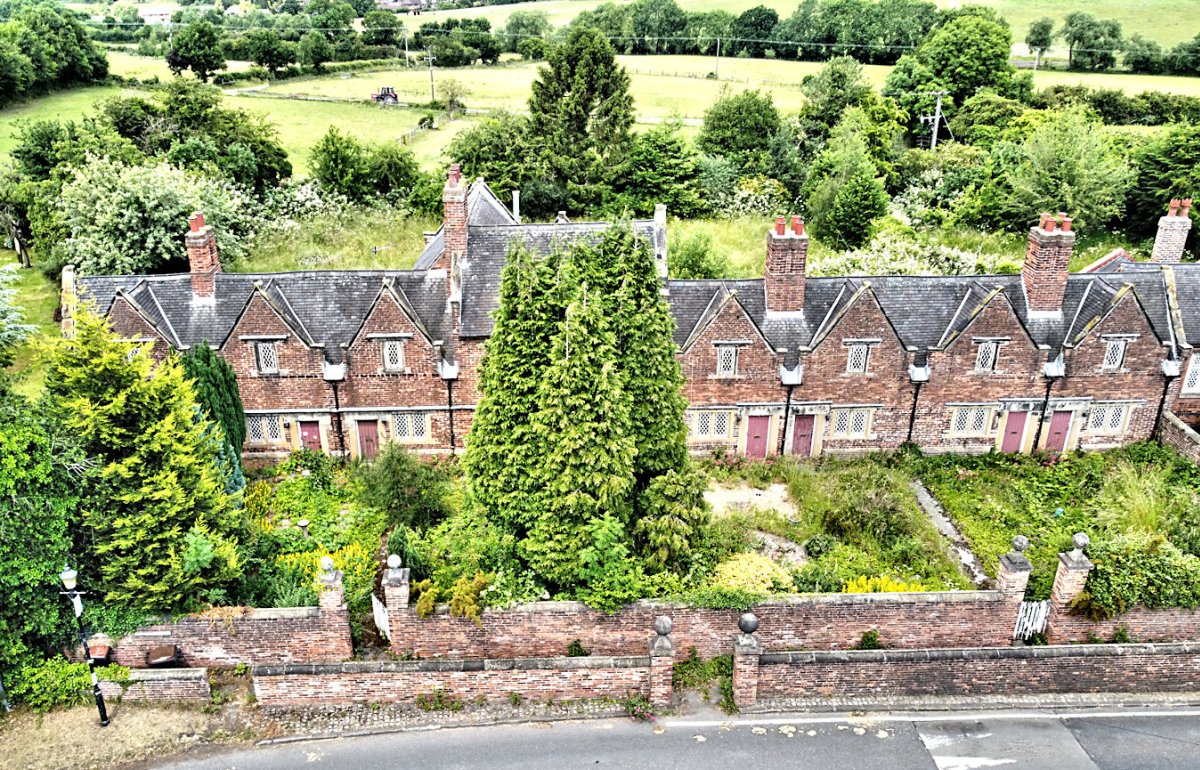Building of the month: St Mary of the Annunciation, Beaminster
Share on:
We recently supported proposals to install solar panels and two air source heat pumps at this Grade I listed medieval church, one of the finest in Dorset.
In 2020 the Church of England announced its target to become carbon 'net zero' by 2030. Since then, we have seen lots of applications for retrofitting listed churches and installing new heating and energy generation systems. As with any big changes to important historic buildings, the impact needs to be carefully judged on a case-by-case basis. For us, detailed information, justification and input from experts are vital to a good application.
We are pleased to lend our support to these sympathetic and well-considered plans, so we thought it might be helpful to share our views on this case...
The eastern elevation. CC BY-SA 2.0 / Mike Searle
Solar PV panels
The panels will be located on the shallow pitch of the South Aisle roof which has a crenellated parapet so they should be barely visible from the ground and the surrounding area. We think the proposed system to fix the panels to the lead roof is suitable as the frame will not penetrate the lead allowing the panels to easily be lifted to inspect and repair the roof. In some respects, the panels can help to shelter the lead from the worst of the weather.
We felt that the size of the proposed panels was appropriate to the energy demands of the church and that the specification was thorough. We were reassured that the checks undertaken by the structural engineer confirmed that the roof could easily take the additional loading, and that the cabling and associated equipment would be as discretely positioned as possible. In time the parish hope to add batteries to store excess power, which would enable them to stop using any gas.
Credit: Gillian Perrott
Air Source Heat Pumps
In our view Air Source Heat Pumps makes sense with the existing underfloor heating system. We would strongly encourage the parish to run the background heating at a level of approximately 12 degrees and then raise this to 18 degrees for events. We think a constant temperature of 16 degrees as suggested is too high and will cause damage to the building and its fittings in the long term. The intention is to boost the background temperate using the existing heaters when required.
The location of the heat pumps appears to be in a discrete area and if well screened, they will have a very minimal impact on the Conservation Area.
What we like to see in an application
Although this was a very comprehensive application, there were still some details that required clarification. If your church is considering similar works, please think about the following:
- Justification. Why does the heating system need to be replaced now? It may be more environmentally friendly to consider retaining a perfectly functioning system until it actually needs replacing. Could it be upgraded instead?
- Expert Input. What other options could be considered for heating / energy generation and would these be less harmful? Think about what happens in the church, frequency of events / activities, could the space be zoned? Consider heating the inhabitants and not the space. Simply changing to a green energy supplier can go a long way towards being ’net zero’.
- Save Energy. Have the parish tackled all the suggested works / energy saving measures listed in the most recent inspection – damp, draughts, insulation. There is no point spending a lot of money if the building is not dry and draught proofed. Materials should be breathable.
- Archaeology and visibility. How visible would the panels / heat pumps etc be and will this be harmful to the church / surrounding area? Heat pumps can be noisy so may not be suitable if there are adjacent houses. Remember that any below ground works for cabling / pipework are very likely to require overseeing by an archaeologist.
New guidance on the subject is available from the Church of England:
- A Brief Guide to Solar Panels and Faculty
- Renewable Energy
- Energy Efficiency
- Heating
- The Practical Path to Net Zero Carbon for Churches
Is there an old building (pre-1720) that you're concerned about? Get in touch.
Sign up for our email newsletter
Get involved




